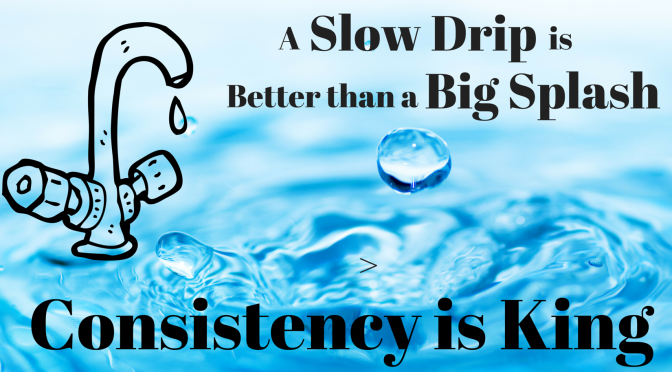Finding the right trust and estate lawyer can feel like searching for a needle in a haystack, just like an Estate Planning Service. With so many options available, how do you ensure that you’re choosing someone who not only understands the law but also resonates with your personal values and needs? It’s essential to ask the right questions to uncover the expertise and approach of potential attorneys. Let’s dive into some key questions that can guide you in this important decision-making process.
10 Questions to Ask an Attorney About Living Trusts

When it comes to living trusts, the nuances can be overwhelming. You might be wondering, “What exactly is a living trust, and why do I need one?” A living trust is a legal document that allows you to place your assets into a trust during your lifetime, which can then be managed by a trustee for your benefit. This can simplify the transfer of your assets upon your passing and help avoid probate. Here are ten essential questions to ask an attorney to ensure they are the right fit for your needs:
- What is your experience with living trusts? It’s crucial to understand how long the attorney has been practicing in this area and how many living trusts they have created. Experience often translates to a deeper understanding of the complexities involved.
- Can you explain the benefits of a living trust compared to a will? A knowledgeable attorney should be able to articulate the differences clearly, helping you understand why a living trust might be more beneficial for your situation.
- What types of assets can be placed in a living trust? This question leads to a deeper understanding of how living trusts work. You’ll want to know if your real estate, bank accounts, and other assets can be included.
- How do you charge for your services? Understanding the fee structure is vital. Some attorneys charge a flat fee, while others bill by the hour. Knowing this upfront can help you budget accordingly.
- What is the process for creating a living trust? A good attorney should walk you through the steps involved, from drafting the trust document to funding the trust with your assets.
- How often should I review my living trust? Life changes, and so should your trust. An attorney should provide guidance on when and why you might need to revisit your trust.
- What happens if I become incapacitated? Understanding how your living trust can protect you in the event of incapacity is crucial. Your attorney should explain how the trust can provide for your care.
- Can you help with funding the trust? Some attorneys offer assistance in transferring assets into the trust, which can be a complex process. It’s worth asking if this is part of their service.
- What are the tax implications of a living trust? While living trusts generally do not provide tax benefits, there may be specific considerations based on your situation. A knowledgeable attorney should be able to clarify this for you.
- Can you provide references from past clients? Hearing from others who have worked with the attorney can provide valuable insights into their professionalism and effectiveness.
What property can go into a living trust?
Now that we’ve covered some essential questions, let’s explore what types of property can actually be placed into a living trust. This is a common concern for many people, and understanding it can help you make informed decisions about your estate planning.
Generally, you can place a wide variety of assets into a living trust, including:
- Real Estate: This includes your home, vacation properties, and any rental properties. Transferring real estate into a trust can help avoid probate and ensure a smooth transition of ownership.
- Bank Accounts: You can transfer checking and savings accounts into your trust, which can simplify access for your trustee and beneficiaries.
- Investments: Stocks, bonds, and mutual funds can also be placed in a living trust, allowing for easier management and distribution.
- Personal Property: Items such as jewelry, art, and collectibles can be included, ensuring that your personal belongings are distributed according to your wishes.
- Business Interests: If you own a business, you can place your business interests into a living trust, which can help in the succession planning process.
As you consider these options, think about your own assets and how they might fit into a living trust. It’s a personal journey, and having the right attorney by your side can make all the difference. Remember, the goal is to create a plan that reflects your wishes and provides peace of mind for you and your loved ones.
Who should be my trustee?
Choosing a trustee is one of the most significant decisions you’ll make when setting up a trust. It’s not just about picking someone you know; it’s about selecting a person or institution that will act in your best interests and those of your beneficiaries. So, who should you consider for this important role?
First, think about the qualities that make a good trustee. They should be trustworthy, organized, and have a good understanding of financial matters. Ideally, this person should also be impartial, especially if there are multiple beneficiaries involved. You wouldn’t want a family member who might favor one sibling over another, right?
Many people opt for a family member or close friend, but this can sometimes lead to complications. For instance, if your brother is your trustee and your sister is a beneficiary, how will they navigate potential conflicts? In such cases, it might be wise to consider a professional trustee, such as a bank or a trust company. These institutions have the experience and neutrality that can help avoid family disputes.
According to a study by the American Bar Association, nearly 60% of individuals choose a family member as their trustee. While this can work well, it’s essential to ensure that the chosen person is willing and able to take on the responsibility. Have an open conversation with them about what the role entails. You might be surprised to learn that someone you thought would be perfect is not ready for the commitment.
Ultimately, the best trustee for you is someone who understands your wishes and can carry them out with integrity. Take your time with this decision; it’s one that will impact your loved ones for years to come.
Does a living trust avoid estate and probate taxes?
This is a question that often comes up when discussing living trusts, and it’s a crucial one. Many people believe that setting up a living trust can help them dodge estate and probate taxes altogether. However, the reality is a bit more nuanced.
A living trust does not inherently avoid estate taxes. The assets placed in a living trust are still considered part of your estate for tax purposes. This means that if your estate exceeds the federal estate tax exemption limit, your heirs may still be liable for estate taxes. As of 2023, this limit is $12.92 million per individual, which is a significant threshold, but it’s essential to be aware of.
On the other hand, one of the primary benefits of a living trust is that it can help you avoid probate, which is the legal process of settling an estate. Probate can be time-consuming and costly, often taking months or even years to resolve. By placing your assets in a living trust, they can be transferred directly to your beneficiaries without going through probate, which can save both time and money.
In a survey conducted by the National Association of Estate Planners & Councils, 70% of respondents indicated that avoiding probate was a primary reason for establishing a living trust. This highlights the importance of understanding the distinction between estate taxes and probate. While a living trust won’t shield your estate from taxes, it can streamline the distribution process, making it easier for your loved ones during a difficult time.
What are the benefits of a living trust?
When considering estate planning options, a living trust often comes up as a popular choice. But what exactly makes it so appealing? Let’s explore some of the key benefits that might resonate with you.
- Avoiding Probate: As mentioned earlier, one of the most significant advantages of a living trust is that it allows your assets to bypass the probate process. This means your beneficiaries can access their inheritance more quickly and without the associated legal fees.
- Privacy: Unlike wills, which become public record during probate, living trusts remain private. This means that the details of your estate and your beneficiaries are kept confidential, which can be a comforting thought for many.
- Flexibility: A living trust can be altered or revoked at any time while you’re alive, giving you the freedom to make changes as your circumstances evolve. This flexibility can be particularly beneficial if your family dynamics change or if you acquire new assets.
- Incapacity Planning: If you become incapacitated, a living trust allows your chosen successor trustee to step in and manage your affairs without the need for court intervention. This can provide peace of mind, knowing that your financial matters will be handled according to your wishes.
In a study by the American Academy of Estate Planning Attorneys, 85% of respondents indicated that the ability to avoid probate was a primary reason for establishing a living trust. This statistic underscores the practical benefits that many find appealing.
Ultimately, a living trust can be a powerful tool in your estate planning arsenal. It offers a blend of flexibility, privacy, and efficiency that can make a significant difference for you and your loved ones. As you consider your options, think about how these benefits align with your goals and values. After all, estate planning is not just about the assets you leave behind; it’s about ensuring your wishes are honored and your loved ones are cared for in the way you envision.
What are the drawbacks of a living trust?
When considering a living trust, it’s essential to weigh the benefits against potential drawbacks. While living trusts can offer significant advantages, such as avoiding probate and providing privacy, they are not without their challenges. Have you ever thought about what might go wrong with a living trust?
One of the primary drawbacks is the initial setup cost. Establishing a living trust often requires legal assistance, which can be expensive. According to a survey by the American Bar Association, the average cost of setting up a living trust can range from $1,500 to $3,000, depending on the complexity of your estate. This might feel like a hefty investment, especially if you’re already managing other financial responsibilities.
Another consideration is the ongoing management required. Unlike a will, which only takes effect upon your death, a living trust requires you to actively manage it while you’re alive. This means you need to transfer assets into the trust, which can be a tedious process. If you forget to transfer an asset, it may not be covered by the trust, leading to complications later on.
Additionally, living trusts do not provide protection from creditors. If you face financial difficulties, creditors can still pursue assets held in a living trust. This is a crucial point to consider if you’re worried about potential liabilities in the future.
Lastly, there’s the issue of limited tax benefits. While living trusts can help with estate taxes, they do not offer the same tax advantages as other estate planning tools, such as irrevocable trusts. It’s important to consult with a tax professional to understand how a living trust fits into your overall tax strategy.
In summary, while living trusts can be a valuable part of your estate planning toolkit, it’s vital to consider these drawbacks. Engaging in a thoughtful conversation with a qualified attorney can help you navigate these complexities and determine the best path forward for your unique situation.
Do I still need a power of attorney?
As you delve into estate planning, you might wonder, “Do I still need a power of attorney if I have a living trust?” The answer is a resounding yes! A living trust and a power of attorney serve different, yet complementary, purposes in your estate plan.
A living trust primarily manages your assets during your lifetime and dictates how they will be distributed after your death. However, it does not address what happens if you become incapacitated. This is where a power of attorney (POA) comes into play. A POA allows you to designate someone to make financial and legal decisions on your behalf if you are unable to do so.
Imagine this scenario: you’re in a car accident and unable to communicate your wishes. Without a power of attorney, your loved ones may face significant hurdles in accessing your bank accounts or managing your bills. This can lead to delays and stress during an already challenging time.
There are different types of powers of attorney, including durable and springing. A durable power of attorney remains effective even if you become incapacitated, while a springing power of attorney only takes effect under specific conditions. It’s crucial to choose the right type based on your needs and comfort level.
Moreover, having a power of attorney can provide peace of mind. Knowing that someone you trust can step in and manage your affairs if needed can alleviate anxiety about the future. It’s a proactive step that ensures your wishes are honored, even when you can’t voice them yourself.
In conclusion, while a living trust is an essential part of your estate plan, a power of attorney is equally important. Together, they create a comprehensive strategy that protects your assets and ensures your wishes are respected, no matter what life throws your way.
What is the difference between a living trust and a will?
When it comes to estate planning, two terms often come up: living trusts and wills. You might be asking yourself, “What’s the difference, and which one do I need?” Let’s break it down in a way that feels relatable and straightforward.
A will is a legal document that outlines how you want your assets distributed after your death. It’s a straightforward way to express your wishes, but it must go through the probate process, which can be time-consuming and costly. In fact, probate can take anywhere from a few months to several years, depending on the complexity of the estate and local laws. This can be frustrating for your loved ones, who may be left waiting to access their inheritance.
On the other hand, a living trust allows you to transfer your assets into a trust during your lifetime. This means that when you pass away, your assets can be distributed to your beneficiaries without going through probate. Imagine the relief for your family when they can access their inheritance quickly and without the burden of legal fees!
Another key difference lies in privacy. Wills become public record once they enter probate, meaning anyone can access the details of your estate. In contrast, living trusts remain private, allowing you to keep your financial affairs confidential. This can be particularly appealing if you value your privacy or have complex family dynamics.
However, it’s important to note that living trusts require more upfront work. You’ll need to retitle your assets in the name of the trust, which can be a bit of a hassle. But once that’s done, you’ll enjoy the benefits of streamlined management and distribution.
In summary, both living trusts and wills have their place in estate planning. A will is simpler and less expensive to set up, while a living trust offers advantages like avoiding probate and maintaining privacy. Depending on your unique situation, you may find that a combination of both is the best approach. Consulting with an estate planning attorney can help you navigate these options and create a plan that aligns with your goals and values.
How do I create a living trust?

Creating a living trust can feel like a daunting task, but it’s a powerful tool for managing your assets and ensuring your wishes are honored after you’re gone. Imagine having the peace of mind that comes from knowing your loved ones won’t have to navigate the complexities of probate court. So, how do you get started?
First, it’s essential to understand what a living trust is. Essentially, it’s a legal document that places your assets into a trust for your benefit during your lifetime and specifies how those assets will be distributed after your death. Here’s a simple roadmap to guide you through the process:
- Identify Your Assets: Take stock of what you own—real estate, bank accounts, investments, and personal property. This inventory will help you determine what you want to include in your trust.
- Choose a Trustee: This person or institution will manage the trust. It could be you, a family member, or a professional. Consider who you trust to handle your affairs responsibly.
- Draft the Trust Document: While you can find templates online, working with a qualified attorney ensures that your trust complies with state laws and accurately reflects your wishes.
- Fund the Trust: This step involves transferring ownership of your assets into the trust. For real estate, this means changing the title; for bank accounts, it may involve updating account ownership.
- Review and Update Regularly: Life changes—like marriage, divorce, or the birth of a child—may necessitate updates to your trust. Regular reviews ensure it remains aligned with your current situation.
According to a study by the American Bar Association, individuals with living trusts often experience smoother transitions for their heirs, reducing the emotional and financial burden during an already challenging time. So, as you embark on this journey, remember that you’re not just creating a document; you’re crafting a legacy.
Should I also have a will?

This is a question many people grapple with, and the answer is often a resounding yes. While a living trust is a fantastic tool for managing your assets, a will serves a different, yet equally important, purpose. Think of it as a complementary piece in your estate planning puzzle.
A will allows you to specify how you want your assets distributed after your death, appoint guardians for minor children, and name an executor to carry out your wishes. Without a will, state laws dictate how your assets are divided, which may not align with your desires.
Moreover, a will can address any assets that are not included in your living trust. For instance, if you acquire new property or assets after establishing your trust, a will can ensure these are distributed according to your wishes. According to a survey by Caring.com, only 32% of Americans have a will, which highlights a significant gap in estate planning. By having both a living trust and a will, you create a comprehensive plan that covers all bases.
In essence, while a living trust helps you manage your assets during your lifetime and avoids probate, a will ensures that everything is taken care of after you’re gone. It’s about creating a safety net for your loved ones, allowing them to focus on healing rather than navigating legal complexities.
7 Questions to Ask Before Hiring a Trust Attorney

Finding the right trust attorney can feel like searching for a needle in a haystack, but asking the right questions can help you sift through your options. Here are seven essential questions to guide your conversation:
- What is your experience with living trusts? Look for an attorney who specializes in estate planning and has a solid track record with living trusts.
- Can you explain the process to me? A good attorney should be able to break down the steps in a way that’s easy to understand, ensuring you feel comfortable and informed.
- What are your fees? Understanding the cost structure upfront can prevent any surprises later. Ask if they charge a flat fee or hourly rate.
- How will you communicate with me? Clear communication is key. Ensure they are accessible and willing to keep you updated throughout the process.
- Can you provide references? Hearing from past clients can give you insight into their experience and the attorney’s effectiveness.
- What happens if I need to make changes later? Life is unpredictable, and your estate plan may need adjustments. Ensure your attorney has a process for updates.
- Do you offer additional services? Some attorneys provide comprehensive estate planning services, including wills and powers of attorney, which can be beneficial.
Asking these questions not only helps you gauge the attorney’s expertise but also builds a rapport that’s essential for a successful working relationship. Remember, this is about your future and the well-being of your loved ones, so take your time to find someone who resonates with you and your needs.
1. What Is Your Experience in Trust Law?
When it comes to finding the right trust and estate lawyer, one of the first questions you should ask is about their experience in trust law. You might wonder, why is this so crucial? Well, trust law is a specialized field that requires not just a solid understanding of legal principles but also practical experience in navigating complex situations. Imagine you’re planning for your family’s future; you want someone who knows the ins and outs of the law, someone who can foresee potential pitfalls and guide you through them.
For instance, consider a scenario where a family member contests a trust. A lawyer with extensive experience in trust law will not only know how to defend the trust but also how to mediate family disputes effectively. According to a study published in the Journal of Estate Planning, lawyers with over ten years of experience in trust law are significantly more successful in resolving disputes than their less experienced counterparts. This is because they have likely encountered a variety of cases and developed strategies that work.
So, when you ask about their experience, look for specifics: How many trust cases have they handled? Have they worked on cases similar to yours? The more detailed their answers, the more confidence you can have in their ability to represent your interests.
2. Can You Provide References or Client Testimonials?
Asking for references or client testimonials is another essential step in your search for a trust and estate lawyer. Think of it as a way to peek behind the curtain. You wouldn’t buy a car without reading reviews, right? The same principle applies here. A reputable lawyer should be more than willing to share feedback from past clients. This not only demonstrates their credibility but also gives you insight into their working style and effectiveness.
For example, a client testimonial might highlight how a lawyer helped a family navigate a particularly challenging estate dispute, emphasizing their communication skills and empathy. According to a survey by the American Bar Association, 85% of clients value a lawyer’s ability to communicate clearly and compassionately. This is especially important in trust and estate matters, where emotions can run high.
When you receive references, don’t hesitate to reach out to those clients. Ask them about their experiences: Were they satisfied with the outcome? How did the lawyer handle communication? This firsthand information can be invaluable in helping you make your decision.
3. What Are Your Fees and Billing Practices?
Let’s face it: legal fees can be daunting. That’s why discussing fees and billing practices upfront is crucial. You want to ensure that you’re not only getting quality representation but also that it fits within your budget. It’s perfectly reasonable to ask, “What are your fees?” and “How do you bill for your services?”
Some lawyers charge a flat fee for specific services, while others may bill hourly. Understanding this can help you gauge the overall cost of your legal needs. For instance, if a lawyer charges an hourly rate, ask for an estimate of how many hours they anticipate your case will take. This way, you can avoid any unpleasant surprises down the line.
Moreover, inquire about additional costs that might arise, such as court fees or costs for filing documents. A transparent lawyer will provide a clear breakdown of potential expenses. According to a report by the National Law Journal, clients who discuss fees openly with their lawyers are 60% more likely to feel satisfied with their legal representation. This satisfaction often stems from feeling informed and in control of their financial commitments.
In the end, having a clear understanding of fees and billing practices not only helps you budget effectively but also fosters a trusting relationship with your lawyer. After all, you want to focus on what truly matters: securing your family’s future.
4. How Will You Communicate With Me Throughout the Process?
Imagine embarking on a journey where the destination is the secure future of your loved ones. It’s a path filled with intricate details, legal jargon, and emotional weight. One of the most crucial aspects of this journey is communication. You might wonder, how will your lawyer keep you informed? Will you be left in the dark, or will they guide you every step of the way?
When discussing communication, it’s essential to establish a clear understanding of how often you can expect updates and through which channels. Some lawyers prefer emails, while others might opt for phone calls or even face-to-face meetings. A good lawyer will not only provide you with a timeline but will also be proactive in reaching out to you. For instance, you might ask, “How often will we check in?” or “What’s your preferred method of communication?”
According to a survey by the American Bar Association, clients often cite poor communication as a primary reason for dissatisfaction with their legal representation. This highlights the importance of finding a lawyer who prioritizes keeping you in the loop. A lawyer who is transparent about their process and responsive to your inquiries can make a world of difference in your experience.
Consider asking your potential lawyer about their communication style. Do they encourage questions? Are they available for quick clarifications? A lawyer who fosters an open dialogue can help alleviate your concerns and make you feel more comfortable throughout the process.
5. What Is Your Approach to Handling Complex Estates?
Complex estates can feel like a labyrinth, filled with twists and turns that can easily overwhelm anyone. Whether it’s a family business, multiple properties, or intricate financial assets, the way your lawyer navigates these complexities is vital. You might find yourself asking, “How do you tackle these challenges?”
A seasoned trust and estate lawyer will have a well-defined strategy for managing complex estates. They should be able to articulate their approach clearly, perhaps by sharing past experiences or case studies. For example, they might explain how they handled a multi-generational family business, ensuring that each family member’s interests were respected while also adhering to legal requirements.
Moreover, it’s important to understand their collaborative approach. Do they work with financial advisors, accountants, or other professionals? A lawyer who values teamwork can provide a more comprehensive strategy for your estate planning needs. According to a study published in the Journal of Estate Planning, collaborative approaches often lead to more effective and satisfactory outcomes for clients.
As you engage in this conversation, consider sharing your specific concerns or complexities. This not only helps the lawyer understand your situation better but also allows you to gauge their expertise and comfort level with your unique needs.
6. How Do You Ensure My Trust Remains Compliant With Changing Laws?
In a world where laws and regulations can shift like sand, ensuring that your trust remains compliant is paramount. You might be wondering, “How can I be sure my estate plan won’t become outdated?” This is where a proactive lawyer shines.
Start by asking your lawyer about their process for staying updated on legal changes. Do they attend continuing education seminars? Are they members of professional organizations that provide updates on estate law? A lawyer who is committed to ongoing education is likely to be more adept at navigating the evolving landscape of trust and estate law.
For instance, recent changes in tax laws can significantly impact estate planning strategies. A lawyer who is aware of these changes can help you adjust your trust accordingly, ensuring that your estate plan remains effective and compliant. According to a report from the National Association of Estate Planners & Councils, staying informed about legislative changes is crucial for maintaining the integrity of estate plans.
Additionally, consider discussing how often you should review your trust. A good practice is to schedule regular check-ins, perhaps every few years or after significant life events, such as marriage, divorce, or the birth of a child. This proactive approach not only keeps your trust compliant but also ensures that it reflects your current wishes and circumstances.
7. What Happens If There Are Disputes Regarding the Trust?
Imagine this: you’ve taken the time to set up a trust, ensuring that your loved ones are cared for after you’re gone. But what if, down the line, disagreements arise among your beneficiaries? It’s a scenario that many people don’t want to think about, yet it’s crucial to understand how disputes can be handled.
Disputes regarding trusts can stem from various issues, such as differing interpretations of the trust document, disagreements over the distribution of assets, or even claims of undue influence or lack of capacity at the time the trust was created. According to a study published in the Journal of Estate Planning, nearly 70% of families experience some form of conflict over estate planning decisions. This statistic underscores the importance of having a clear plan in place.
So, what happens when these disputes arise? Typically, the first step is to attempt resolution through communication. Open dialogue among beneficiaries can often clear up misunderstandings. However, if that doesn’t work, mediation is a common next step. Mediation involves a neutral third party who helps facilitate a conversation between the disputing parties, aiming for a mutually agreeable solution.
If mediation fails, the situation may escalate to litigation, which can be both time-consuming and costly. In fact, a report from the American Bar Association indicates that litigation can drain up to 50% of the estate’s value in legal fees. This is why it’s essential to discuss potential dispute resolution strategies with your trust attorney upfront. They can help you incorporate clauses in the trust that outline how disputes should be handled, potentially saving your family from future heartache.
Ultimately, the goal is to ensure that your wishes are honored while minimizing conflict among your loved ones. By addressing these concerns proactively, you can help create a smoother path for your beneficiaries during a challenging time.
10 Common Questions to Ask a Trust Attorney
When it comes to finding the right trust attorney, asking the right questions can make all the difference. You want someone who not only understands the law but also resonates with your personal values and goals. Here are ten essential questions to guide your conversation:
- What is your experience with trust and estate law? It’s important to know how long they’ve been practicing and their specific experience with trusts.
- Can you explain the different types of trusts available? Understanding the options can help you make informed decisions.
- How do you charge for your services? Clarifying fees upfront can prevent surprises later on.
- What is your approach to client communication? You want an attorney who keeps you informed and is responsive to your needs.
- Can you provide references from past clients? Hearing from others can give you insight into their working style and effectiveness.
- What happens if there are disputes regarding the trust? As we discussed earlier, knowing their approach to conflict resolution is crucial.
- How will you ensure my wishes are accurately reflected in the trust? This speaks to their attention to detail and commitment to your goals.
- What are the tax implications of setting up a trust? Understanding the financial aspects is vital for long-term planning.
- How often should we review the trust? Regular reviews can help keep your estate plan aligned with your current situation.
- What happens if I need to make changes to the trust in the future? Flexibility is key, and you want to know how easy it is to update your trust.
By asking these questions, you can gauge not only the attorney’s expertise but also their compatibility with your needs. Remember, this is a partnership, and finding someone you trust is essential for your peace of mind.
What is a trust, and how does it work?
At its core, a trust is a legal arrangement that allows one party to hold assets on behalf of another. It’s a powerful tool in estate planning, designed to manage and distribute your assets according to your wishes. But how does it actually work? Let’s break it down.
When you create a trust, you typically appoint a trustee—this could be yourself, a family member, or a professional. The trustee is responsible for managing the trust’s assets and ensuring they are distributed according to your instructions. The person or people who benefit from the trust are known as beneficiaries.
For example, let’s say you set up a trust for your children. You might specify that they receive funds for education expenses, with the remaining assets distributed to them when they reach a certain age. This not only provides financial support but also ensures that your children are cared for in a way that aligns with your values.
Trusts can also offer significant tax advantages and help avoid probate, which is the legal process of distributing a deceased person’s assets. According to a report from the National Association of Estate Planners & Councils, trusts can help families save time and money by bypassing the often lengthy probate process.
In essence, a trust is about control and protection. It allows you to dictate how your assets are managed and distributed, providing peace of mind that your wishes will be honored. As you consider your estate planning options, understanding the mechanics of trusts can empower you to make informed decisions that benefit your loved ones for years to come.
What are the benefits of creating a trust?
Have you ever wondered why so many people are turning to trusts as a key part of their estate planning? The benefits of creating a trust can be both profound and practical, offering peace of mind and financial security for you and your loved ones. Let’s explore some of these advantages together.
First and foremost, trusts can help you avoid the often lengthy and costly process of probate. When you pass away, your assets typically go through probate, which can take months or even years, depending on the complexity of your estate. However, assets held in a trust can be distributed to your beneficiaries without going through this process, allowing for a smoother transition. According to a study by the American Bar Association, estates with trusts can save families an average of 5-10% in legal fees and other costs associated with probate.
Another significant benefit is the level of control you maintain over your assets. With a trust, you can specify exactly how and when your assets are distributed. For instance, if you have young children, you might want to set up a trust that releases funds to them at certain ages or milestones, ensuring they are financially supported without overwhelming them with a lump sum. This kind of thoughtful planning can prevent potential mismanagement of funds and provide a safety net for your loved ones.
Additionally, trusts can offer privacy. Unlike wills, which become public record once they enter probate, trusts remain private documents. This means that the details of your estate and how you wish to distribute your assets can stay within the family, protecting your loved ones from potential disputes or unwanted scrutiny.
Lastly, trusts can provide tax benefits. Certain types of trusts can help reduce estate taxes, allowing you to pass on more of your wealth to your heirs. For example, irrevocable life insurance trusts can remove life insurance from your taxable estate, potentially saving your beneficiaries a significant amount in taxes.
In summary, creating a trust can offer you control, privacy, and financial benefits that are hard to overlook. It’s a proactive step towards ensuring that your wishes are honored and your loved ones are taken care of, even when you’re no longer there to guide them.
How do I choose the right trustee?
Choosing the right trustee is one of the most critical decisions you’ll make when setting up a trust. After all, this person will be responsible for managing your assets and ensuring your wishes are carried out. So, how do you find someone who can handle this important role with care and competence?
First, consider the qualities that are essential in a trustee. You want someone who is trustworthy, organized, and has a good understanding of financial matters. This could be a family member, a close friend, or even a professional trustee, such as a bank or a trust company. Each option has its pros and cons. For instance, a family member may have a personal understanding of your wishes, but they might lack the financial expertise needed to manage complex assets.
It’s also important to think about the potential for conflict. If you choose a family member, will they be able to remain impartial when it comes to distributing assets? Or could their personal feelings lead to disputes among beneficiaries? A neutral third party, like a professional trustee, can often help mitigate these issues, providing an unbiased perspective.
Another factor to consider is the trustee’s availability. Managing a trust can be time-consuming, especially if it involves ongoing investments or property management. Make sure the person you choose has the time and willingness to take on this responsibility. You might ask them directly, “Are you comfortable with the level of commitment this role requires?”
Lastly, don’t hesitate to have an open conversation about fees if you’re considering a professional trustee. Understanding the costs involved can help you make an informed decision that aligns with your financial goals.
In essence, choosing the right trustee is about finding someone who not only understands your wishes but also has the skills and temperament to carry them out effectively. It’s a decision that deserves careful thought and consideration, as it can significantly impact the legacy you leave behind.
Can I modify or revoke a trust?
Life is full of changes, and sometimes those changes necessitate adjustments to our estate plans. If you’ve set up a trust, you might be wondering: can I modify or revoke it if my circumstances change? The answer largely depends on the type of trust you’ve created.
For revocable trusts, the answer is a resounding yes! Revocable trusts are designed to be flexible. You can modify the terms, change beneficiaries, or even revoke the trust entirely if you choose. This flexibility is one of the reasons many people opt for revocable trusts in their estate planning. For example, if you initially set up a trust for your children but later decide to include a grandchild, you can easily amend the trust to reflect this new family dynamic.
However, if you have an irrevocable trust, the situation is different. Once established, irrevocable trusts generally cannot be modified or revoked without the consent of all beneficiaries. This is because irrevocable trusts are often used for specific purposes, such as asset protection or tax benefits, and changing them could undermine those goals. If you find yourself in a situation where you need to make changes to an irrevocable trust, it may require legal action, which can be complex and time-consuming.
It’s also worth noting that even with revocable trusts, there are some formalities to follow when making changes. You’ll typically need to document any modifications in writing and ensure that all relevant parties are informed. This helps maintain clarity and prevents misunderstandings down the line.
In conclusion, while you can modify or revoke a revocable trust with relative ease, irrevocable trusts come with more stringent rules. It’s always a good idea to consult with a qualified estate attorney when considering changes to your trust, ensuring that your decisions align with your overall estate planning goals.
How can I protect my assets with a trust?
Imagine you’ve spent a lifetime building your dream home, nurturing your family, and accumulating assets that reflect your hard work and dedication. Now, the thought of those cherished possessions falling into the wrong hands or being mishandled after you’re gone can be unsettling. This is where a trust comes into play, acting as a protective shield for your assets.
A trust is a legal arrangement where one party, known as the trustee, holds and manages assets for the benefit of another party, the beneficiary. By establishing a trust, you can ensure that your assets are distributed according to your wishes, rather than being subjected to the often lengthy and public probate process.
For instance, let’s say you have a family heirloom, like a vintage car that has been passed down through generations. By placing this car in a trust, you can specify who will inherit it and under what conditions, ensuring it remains within the family and is cared for properly. According to a study by the American Bar Association, individuals who utilize trusts often report greater peace of mind regarding their estate planning.
Moreover, trusts can provide tax benefits, protect assets from creditors, and even help in qualifying for government benefits. As you consider your options, think about what matters most to you. What legacy do you want to leave behind? A trust can be a powerful tool in achieving that goal.
How does a trust help with incapacity planning?
Have you ever thought about what would happen if you were suddenly unable to manage your affairs due to illness or an accident? It’s a daunting thought, but planning for incapacity is crucial, and a trust can be an invaluable part of that strategy.
When you create a trust, you can designate a successor trustee who will step in to manage your assets if you become incapacitated. This means that your financial affairs can continue to be handled smoothly without the need for court intervention. For example, if you were to suffer a stroke, your chosen successor trustee could immediately take over, ensuring that bills are paid, investments are managed, and your wishes are honored.
Experts emphasize the importance of having these plans in place. According to estate planning attorney Lisa McDevitt, “A trust not only provides a clear directive for your assets but also ensures that your loved ones won’t have to navigate the complexities of the legal system during a difficult time.” This proactive approach can alleviate stress for your family, allowing them to focus on supporting each other rather than dealing with legal hurdles.
Incapacity planning is not just about protecting your assets; it’s about safeguarding your peace of mind and ensuring that your wishes are respected, even when you can’t voice them yourself.
What is the role of a successor trustee?
Picture this: you’ve set up a trust, carefully outlining your wishes and selecting a successor trustee. But what exactly does this person do, and why is their role so critical? Understanding the responsibilities of a successor trustee can help you make an informed choice when it comes to your estate planning.
A successor trustee is the individual or institution you designate to manage your trust after your passing or if you become incapacitated. Their duties include managing the trust assets, ensuring that your wishes are carried out, and distributing assets to beneficiaries according to your instructions. This role is not just a title; it comes with significant responsibilities.
For example, if you’ve established a trust for your children, your successor trustee will be responsible for managing the funds until they reach a certain age or milestone. This ensures that your children are financially supported while also protecting them from potential mismanagement of funds. According to a survey by the National Association of Estate Planners & Councils, nearly 60% of respondents felt that choosing the right trustee was one of the most important decisions in their estate planning process.
When selecting a successor trustee, consider their financial acumen, integrity, and ability to handle sensitive family dynamics. It’s a role that requires not just knowledge but also compassion and understanding. After all, this person will be navigating your family’s emotional landscape during a challenging time. So, who do you trust to carry out your legacy? This is a question worth pondering as you embark on your estate planning journey.
How can a trust help with charitable giving?
Have you ever thought about how your legacy could make a difference in the world? A trust can be a powerful tool for charitable giving, allowing you to support causes you care about while also enjoying potential tax benefits. Imagine being able to contribute to your favorite charity while still maintaining control over your assets during your lifetime. This is where trusts come into play.
One popular option is the charitable remainder trust (CRT). This type of trust allows you to donate assets to a charity while retaining the right to receive income from those assets for a specified period. After that period ends, the remaining assets go to the charity. According to a study by the National Philanthropic Trust, CRTs not only provide a way to support charitable organizations but also offer significant tax advantages, such as a charitable deduction based on the present value of the charity’s future interest.
Another option is the charitable lead trust (CLT), which works in the opposite way. With a CLT, the charity receives income from the trust for a set number of years, after which the remaining assets are passed on to your heirs. This can be a great way to reduce estate taxes while still supporting a cause you believe in. As noted by estate planning expert Robert A. Esperti, “Using trusts for charitable giving not only fulfills your philanthropic goals but can also enhance your financial strategy.”
Ultimately, trusts can help you create a lasting impact, ensuring that your values and passions continue to thrive even after you’re gone. So, as you consider your estate planning options, think about how a trust could align with your charitable intentions.
What is the difference between a revocable and an irrevocable trust?
When diving into the world of trusts, one of the first questions you might ask is: “What’s the difference between a revocable and an irrevocable trust?” This distinction is crucial, as it can significantly affect your estate planning strategy.
A revocable trust is like a safety net. You can change or dissolve it at any time during your lifetime. This flexibility allows you to adapt to life’s changes—whether it’s a new family member, a change in financial circumstances, or simply a shift in your wishes. For instance, if you decide to add a new beneficiary or change how your assets are distributed, a revocable trust makes that process straightforward. However, it’s important to note that assets in a revocable trust are still considered part of your estate for tax purposes.
On the other hand, an irrevocable trust is more like a commitment. Once you establish it, you generally cannot change or revoke it without the consent of the beneficiaries. This type of trust can provide significant tax benefits and asset protection, as the assets are removed from your taxable estate. For example, if you were to place your home in an irrevocable trust, it would no longer be considered part of your estate, potentially reducing estate taxes. Estate planning attorney Jennifer A. McKinney emphasizes, “Choosing between revocable and irrevocable trusts depends on your goals—whether you prioritize flexibility or asset protection.”
Understanding these differences can empower you to make informed decisions about your estate planning. So, as you contemplate your options, consider what level of control and protection you desire for your assets.
How can I ensure my trust is properly funded?
Have you ever set up a plan only to realize later that a crucial step was overlooked? This is often the case with trusts. Establishing a trust is just the beginning; ensuring it is properly funded is where the real work lies. Without proper funding, your trust may not serve its intended purpose, leaving your wishes unfulfilled.
To start, it’s essential to transfer assets into the trust. This can include real estate, bank accounts, investments, and personal property. For example, if you’ve created a trust to manage your family home, you’ll need to formally transfer the title of the property into the trust’s name. This process can vary by state, so consulting with a legal expert is advisable.
Another critical step is to review beneficiary designations. Some assets, like life insurance policies and retirement accounts, may have designated beneficiaries that bypass the trust. Ensuring these designations align with your trust’s intentions is vital. According to a report by the American Bar Association, many individuals overlook this step, which can lead to unintended consequences.
Regularly reviewing and updating your trust is also essential. Life changes—such as marriage, divorce, or the birth of a child—can impact your estate planning needs. As estate planning attorney David L. Johnson advises, “Think of your trust as a living document that needs to evolve with you.”
By taking these proactive steps, you can ensure that your trust is not only established but also effectively funded, allowing it to fulfill your wishes and provide for your loved ones as you intended.
Questions to ask your living trust attorney
When it comes to securing your family’s future, finding the right living trust attorney can feel like a daunting task. After all, this is someone who will help you navigate the complexities of estate planning, ensuring that your wishes are honored and your loved ones are protected. So, what should you ask to ensure you’re making the best choice? Here are some essential questions to guide your conversation.
Get answers to these questions
First and foremost, you want to understand the attorney’s experience and approach. Consider asking:
- What is your experience with living trusts? It’s crucial to know how long they’ve been practicing and how many living trusts they’ve created. An attorney with extensive experience will be more adept at anticipating potential issues.
- Can you explain the process of setting up a living trust? A good attorney should be able to break down the steps in a way that’s easy to understand. This not only shows their expertise but also their ability to communicate effectively.
- What are your fees, and how are they structured? Understanding the cost upfront can save you from unexpected surprises later. Some attorneys charge a flat fee, while others may bill hourly.
- How do you handle updates or changes to the trust? Life is unpredictable, and your estate plan may need adjustments over time. Knowing how your attorney manages these changes is vital.
- Can you provide references from past clients? Hearing from others who have worked with the attorney can give you valuable insights into their professionalism and effectiveness.
These questions not only help you gauge the attorney’s qualifications but also establish a rapport. Remember, you’re looking for someone you can trust and feel comfortable with, as this relationship will be pivotal in your estate planning journey.
Working with a trusted attorney
Once you’ve found a potential attorney, it’s essential to foster a collaborative relationship. Trust is built through open communication and mutual respect. Here are some tips to ensure a productive partnership:
- Be open about your goals and concerns. Share your vision for your estate and any worries you may have. This transparency allows your attorney to tailor their advice to your specific needs.
- Ask for clarification when needed. If something isn’t clear, don’t hesitate to ask for further explanation. A good attorney will appreciate your desire to understand the process fully.
- Stay engaged throughout the process. Regular check-ins can help you stay informed and involved, ensuring that your wishes are accurately reflected in the trust.
- Trust your instincts. If something feels off or you’re not comfortable, it’s okay to seek a second opinion. Your peace of mind is paramount.
Ultimately, working with a trusted attorney is about building a partnership that prioritizes your family’s future. By asking the right questions and fostering open communication, you can navigate the complexities of estate planning with confidence and clarity. Remember, this is not just a legal transaction; it’s a meaningful step towards securing your legacy and providing for those you love.
10 Questions To Ask An Estate Planning Attorney
When it comes to securing your legacy and ensuring your loved ones are taken care of, finding the right estate planning attorney is crucial. But how do you know if you’ve found the right fit? Asking the right questions can illuminate their expertise and help you feel confident in your choice. Here are ten essential questions to guide your conversation:
- What is your experience in estate planning? Understanding their background can give you insight into their expertise. Look for someone who has handled cases similar to yours.
- How do you charge for your services? Some attorneys charge a flat fee, while others bill hourly. Knowing this upfront can help you budget accordingly.
- Can you explain the estate planning process? A good attorney should be able to break down the steps in a way that’s easy to understand, ensuring you feel comfortable throughout the process.
- What documents will I need? This question can help you prepare for your meetings and understand what information is necessary to create a comprehensive plan.
- How do you handle updates to my estate plan? Life changes, and so should your estate plan. It’s important to know how often you should revisit your plan and what the attorney’s process is for updates.
- What happens if I become incapacitated? Understanding how your estate plan addresses incapacity is vital. Your attorney should provide clarity on how decisions will be made on your behalf.
- How do you communicate with clients? Knowing how often you can expect updates and how you’ll communicate can set the tone for a smooth working relationship.
- Can you provide references from past clients? Hearing from others who have worked with the attorney can provide valuable insights into their effectiveness and approach.
- What is your approach to minimizing taxes? Estate taxes can significantly impact your legacy. An experienced attorney should have strategies in place to help minimize tax burdens.
- How do you ensure my wishes are honored? Ultimately, you want to know that your attorney will advocate for your wishes and ensure they are carried out as intended.
By asking these questions, you can gain a clearer picture of the attorney’s qualifications and how they align with your needs. Remember, this is about your future and the future of your loved ones, so take your time to find the right partner in this journey.
What Is Estate Planning Attorney?
So, what exactly is an estate planning attorney? Think of them as your trusted guide through the often complex world of wills, trusts, and estate management. These legal professionals specialize in helping individuals and families prepare for the distribution of their assets after death, as well as addressing issues related to incapacity during their lifetime.
Estate planning attorneys are well-versed in the laws that govern estates and can help you navigate the nuances of your specific situation. They can assist with drafting wills, establishing trusts, and ensuring that your wishes are documented and legally binding. In essence, they help you create a roadmap for your assets, ensuring that your loved ones are taken care of according to your wishes.
What Are The Responsibilities Of An Estate Planning Attorney?
The responsibilities of an estate planning attorney extend far beyond simply drafting documents. They play a pivotal role in ensuring that your estate plan is comprehensive and tailored to your unique needs. Here are some key responsibilities:
- Consultation and Planning: They begin by understanding your goals, family dynamics, and financial situation to create a personalized estate plan.
- Document Preparation: This includes drafting wills, trusts, powers of attorney, and healthcare directives, ensuring all documents comply with state laws.
- Asset Protection: They help you identify strategies to protect your assets from creditors and minimize tax implications.
- Updating Plans: Life changes, such as marriage, divorce, or the birth of a child, may necessitate updates to your estate plan. Your attorney should guide you on when and how to make these changes.
- Probate Guidance: If your estate goes through probate, your attorney can assist your loved ones in navigating this process, ensuring that your wishes are honored.
In short, an estate planning attorney is not just a legal advisor; they are a partner in securing your legacy and providing peace of mind for you and your family. By understanding their responsibilities, you can better appreciate the value they bring to your estate planning journey.
What Are The Qualifications Of An Estate Planning Attorney?
When it comes to securing your legacy and ensuring your wishes are honored after you’re gone, finding the right estate planning attorney is crucial. But how do you know if an attorney is truly qualified? It’s a question that many of us ponder, especially when we’re navigating the often complex world of wills, trusts, and estates.
First and foremost, a qualified estate planning attorney should have a law degree and be licensed to practice in your state. This is the basic requirement, but it’s just the tip of the iceberg. Many attorneys go further by specializing in estate planning, which often involves additional training and certifications. For instance, some may become certified as a Certified Estate Planner (CEP) or a Certified Trust and Fiduciary Advisor (CTFA). These designations indicate a deeper understanding of the nuances involved in estate planning.
Experience is another key factor. You wouldn’t want a rookie pilot flying your plane, right? Similarly, you want someone who has a proven track record in estate planning. Look for attorneys who have been practicing for several years and have handled cases similar to yours. According to a study by the American Bar Association, attorneys with at least five years of experience in estate planning are more likely to provide comprehensive and effective services.
Moreover, consider their approach to client relationships. A good estate planning attorney should be approachable, empathetic, and willing to listen to your concerns. After all, this is about your life, your family, and your future. You want someone who will take the time to understand your unique situation and tailor their advice accordingly.
Lastly, don’t overlook the importance of reviews and referrals. Ask friends or family for recommendations, or check online reviews. A personal story can often reveal more than a resume ever could. Remember, this is a partnership, and you want to feel comfortable and confident in your choice.
Questions To Ask An Estate Planning Attorney
Once you’ve narrowed down your options, it’s time to have a conversation with potential attorneys. This is your opportunity to gauge their expertise and see if they’re the right fit for you. Here are some essential questions to guide your discussion:
1. What Types Of Estate Planning Services Do You Offer?
This question is fundamental because estate planning is not a one-size-fits-all service. Some attorneys may focus primarily on wills, while others might specialize in trusts, powers of attorney, or healthcare directives. Understanding the range of services they provide can help you determine if they can meet your specific needs.
For example, if you have a blended family, you might need an attorney who is well-versed in creating trusts that protect the interests of all parties involved. Or, if you own a business, you’ll want someone who can help you navigate the complexities of business succession planning. By asking this question, you can ensure that the attorney has the breadth of knowledge necessary to address your unique situation.
Additionally, inquire about their approach to estate planning. Do they take a collaborative approach, working closely with financial advisors or accountants? Or do they prefer to handle everything in-house? Understanding their methodology can give you insight into how they will manage your estate planning process.
2. What Is Your Experience In Estate Planning?
When it comes to finding the right trust and estate lawyer, one of the most crucial questions you can ask is about their experience in estate planning. You might wonder, why does this matter so much? Well, estate planning is not just about drafting a will; it encompasses a wide range of legal and financial considerations that can significantly impact your family’s future.
Imagine sitting down with a lawyer who has spent years navigating the complexities of estate law. They can share stories of how they’ve helped families like yours avoid common pitfalls, ensuring that assets are distributed according to your wishes. For instance, a seasoned attorney might recount a case where they helped a family resolve a dispute over a property that was not clearly outlined in the will, saving them from lengthy and costly litigation.
According to a survey by the American Bar Association, nearly 60% of Americans do not have a will or estate plan in place. This statistic highlights the importance of working with someone who understands the nuances of estate planning. You want a lawyer who not only knows the law but also has a track record of successfully guiding clients through the process. Ask them about their specific experience with cases similar to yours, and don’t hesitate to request references or testimonials from past clients.
3. How Do You Charge For Your Services?
Understanding how a lawyer charges for their services is essential for budgeting your estate planning. You might be thinking, “Will this be a flat fee, hourly rate, or something else?” Each structure has its pros and cons, and knowing what to expect can help you avoid any surprises down the line.
For example, some lawyers may offer a flat fee for creating a basic estate plan, which can provide peace of mind as you know exactly what you’ll be paying upfront. Others might charge by the hour, which can be beneficial if your needs are more complex and require ongoing consultation. It’s important to clarify what services are included in the fee. Will they handle all the paperwork? Will there be additional costs for filing or other administrative tasks?
Additionally, consider asking about payment plans or retainer fees. Some lawyers are willing to work with you to make their services more accessible. A good lawyer will be transparent about their fees and willing to discuss your budget openly. Remember, this is an investment in your peace of mind and your family’s future, so it’s worth taking the time to understand the financial aspects fully.
4. Can You Explain The Estate Planning Process?
Have you ever felt overwhelmed by the thought of estate planning? You’re not alone. Many people find the process daunting, filled with legal jargon and complex decisions. That’s why it’s vital to work with a lawyer who can break it down for you in a way that makes sense.
When you ask a potential lawyer to explain the estate planning process, you’re looking for clarity and reassurance. A knowledgeable attorney should be able to outline the steps involved, from gathering your financial information to drafting documents like wills, trusts, and powers of attorney. They should also discuss the importance of regularly reviewing and updating your estate plan as your life circumstances change.
For instance, a lawyer might explain that the first step is to assess your assets and determine your goals. Do you want to minimize taxes? Ensure your children are cared for? Protect your assets from creditors? Each of these goals will influence the strategies you choose. They should also emphasize the importance of communication with your family, ensuring everyone understands your wishes and the reasoning behind your decisions.
Ultimately, a good estate planning lawyer will not only guide you through the legalities but also provide emotional support, helping you feel confident that your loved ones will be taken care of according to your wishes. This process is about more than just paperwork; it’s about securing your legacy and providing peace of mind for you and your family.
5. How Do You Stay Current With Changes In Estate Planning Laws?
Imagine sitting down with a lawyer who seems to have a finger on the pulse of the ever-evolving world of estate planning. You might wonder, how do they keep up with the constant changes in laws and regulations? This question is crucial because estate planning is not a one-time event; it’s a dynamic process that requires ongoing attention and expertise.
Many estate planning attorneys engage in continuous education to stay informed. They might attend seminars, participate in webinars, or subscribe to legal journals that focus on estate law. For instance, the American Bar Association offers resources and continuing education programs specifically tailored for estate planning professionals. By asking this question, you can gauge whether the lawyer is proactive about their education and aware of recent changes that could impact your estate plan.
Moreover, consider asking about their involvement in professional organizations. Membership in groups like the National Association of Estate Planners & Councils (NAEPC) can indicate a commitment to staying updated. A lawyer who is active in these communities is likely to be more informed about the latest trends and legislative changes. This not only reflects their dedication but also their network of resources, which can be invaluable for your estate planning needs.
6. Do You Have Experience With My Particular Situation?
When it comes to estate planning, one size definitely does not fit all. Each individual or family has unique circumstances that require tailored solutions. So, it’s essential to ask your potential lawyer about their experience with situations similar to yours. This could include specific family dynamics, types of assets, or even particular goals you have in mind.
For example, if you have a blended family, you might want to ensure that your estate plan addresses the needs of both your current spouse and your children from a previous marriage. A lawyer who has successfully navigated similar cases can provide insights and strategies that are particularly relevant to your situation. You might ask, “Can you share examples of how you’ve helped clients with similar family structures?” This not only gives you a sense of their expertise but also reassures you that they understand the nuances of your needs.
Additionally, consider their familiarity with specific assets, such as business interests or real estate holdings. A lawyer who has dealt with complex asset distributions will be better equipped to handle your estate plan effectively. Their experience can help you avoid common pitfalls and ensure that your wishes are honored.
7. How Will My Estate Plan Be Updated If My Circumstances Change?
Life is unpredictable, isn’t it? One moment, you’re enjoying a peaceful retirement, and the next, you might find yourself facing significant life changes—like a marriage, divorce, or the birth of a grandchild. This is why it’s vital to discuss how your estate plan will adapt to these changes. A good estate planning lawyer will not only create a plan but will also provide a roadmap for future updates.
Ask your lawyer about their process for reviewing and updating estate plans. Do they have a system in place for regular check-ins? For instance, some attorneys recommend annual reviews, while others may suggest updates whenever a significant life event occurs. Understanding their approach can help you feel more secure, knowing that your estate plan will remain relevant as your life evolves.
Moreover, inquire about the costs associated with updates. Some lawyers may charge a flat fee for revisions, while others might bill hourly. Knowing this upfront can help you budget for future changes. You might also want to ask if they provide any resources or reminders to help you keep your plan current. This proactive approach can save you from potential headaches down the line.
8. Can You Provide References From Clients You Have Helped With Estate Planning?
When searching for the right trust and estate lawyer, one of the most insightful questions you can ask is whether they can provide references from past clients. Think of it as a way to peek behind the curtain. Just like you might ask a friend for a recommendation for a good restaurant, asking for references can give you a clearer picture of what to expect.
Many lawyers will be more than willing to share testimonials or connect you with clients who have had similar needs. This is not just about their legal expertise; it’s also about their interpersonal skills. You want someone who can guide you through what can often be an emotional and complex process. For instance, a client might share how their lawyer helped them navigate family dynamics during estate planning, ensuring that everyone felt heard and respected.
Moreover, consider the type of feedback you’re looking for. Are you interested in how the lawyer handled a particularly challenging case? Or perhaps you want to know how responsive they were throughout the process? These insights can help you gauge whether the lawyer’s approach aligns with your expectations and needs.
In a study conducted by the American Bar Association, it was found that clients who felt their lawyers communicated effectively were significantly more satisfied with the overall experience. So, don’t hesitate to ask for those references; they can be a valuable resource in your decision-making process.
9. How Long Will It Take To Create An Estate Plan?
Time is often a crucial factor when it comes to estate planning. You might be wondering, “How long will this take?” The answer can vary widely based on several factors, including the complexity of your estate and the lawyer’s current workload. However, having a clear timeline can help you manage your expectations and plan accordingly.
Typically, a straightforward estate plan can take anywhere from a few weeks to a couple of months to finalize. This includes drafting documents like wills, trusts, and powers of attorney. If your situation is more complex—perhaps you have multiple properties, business interests, or unique family dynamics—it could take longer. In these cases, the lawyer may need to conduct thorough research and discussions to ensure that every detail is addressed.
It’s also important to consider the time you’ll need to invest in gathering necessary documents and information. You might need to compile financial statements, property deeds, and other relevant paperwork. A good lawyer will guide you through this process, helping you understand what’s needed and why.
Ultimately, asking this question not only helps you understand the timeline but also gives you insight into the lawyer’s organizational skills and approach to client management. A lawyer who provides a clear timeline and keeps you updated throughout the process can make a significant difference in your experience.
10. What Happens To My Estate Plan After I Pass Away?
It’s a sobering thought, but understanding what happens to your estate plan after you pass away is crucial for peace of mind. You might be asking yourself, “Will my wishes be honored? How will my loved ones navigate this process?” These are valid concerns, and a knowledgeable estate lawyer can provide clarity.
Once you pass away, your estate plan typically goes into effect. If you have a will, it will need to go through the probate process, where a court validates the will and oversees the distribution of your assets. This process can take several months to years, depending on the complexity of your estate and any potential disputes among heirs.
On the other hand, if you have established a trust, your assets can often be distributed more quickly and privately, bypassing probate altogether. This is one of the many reasons why people choose to create trusts as part of their estate planning. According to a survey by the National Association of Estate Planners & Councils, nearly 70% of respondents believed that having a trust would simplify the process for their heirs.
Moreover, it’s essential to communicate your wishes clearly to your loved ones. A well-drafted estate plan should include not just the legal documents but also a letter of intent or personal notes explaining your decisions. This can help alleviate confusion and emotional distress during a difficult time.
In summary, understanding the fate of your estate plan after your passing is not just about legalities; it’s about ensuring that your loved ones are taken care of and that your wishes are honored. A good estate lawyer will help you navigate these waters, providing reassurance and clarity every step of the way.
10 Crucial Questions to Ask Your Estate Planning Attorney
Choosing the right estate planning attorney can feel like a daunting task, but it’s one of the most important decisions you’ll make for your future and your loved ones. You want someone who not only understands the law but also appreciates your unique situation and goals. So, what should you ask to ensure you’re making the best choice? Here are ten crucial questions that can guide your conversation and help you find the right fit.
What Is Your Estate Planning Experience?
When it comes to estate planning, experience matters. You wouldn’t want a novice pilot flying your plane, right? Similarly, you want to know how long your attorney has been practicing in this specific area of law. Ask them about their background and the types of cases they typically handle. For instance, do they focus on wills and trusts, or do they also deal with complex tax issues and business succession planning?
Consider this: an attorney with years of experience in estate planning will likely have encountered a variety of scenarios and can provide insights that a less experienced lawyer might not. According to a study by the American Bar Association, attorneys with over ten years of experience are more adept at navigating the complexities of estate law, which can save you time and money in the long run.
What does an initial meeting look like?
The first meeting with your potential attorney is a critical moment. It’s not just about assessing their qualifications; it’s also about gauging how comfortable you feel with them. You might wonder, “What should I expect?” A good attorney will typically start by asking you about your goals and concerns. They should be interested in understanding your family dynamics, financial situation, and any specific wishes you have for your estate.
During this meeting, pay attention to how they communicate. Are they patient and willing to explain complex legal terms in a way that makes sense to you? A study published in the Journal of Legal Studies found that effective communication is a key factor in client satisfaction. You want someone who can break down the legal jargon and make the process feel less intimidating.
Additionally, ask about the documents and information you should bring to this initial meeting. This preparation can help you make the most of your time together and demonstrate your attorney’s commitment to your case. Remember, this is not just a transaction; it’s the beginning of a relationship built on trust and understanding.
How Are Fees Structured?
When it comes to hiring a trust and estate lawyer, understanding their fee structure is crucial. After all, you want to ensure that you’re getting the best value for your investment while also feeling comfortable with the financial commitment. So, how do these fees typically work?
Most estate lawyers operate on one of three common fee structures:
- Hourly Rate: This is the most straightforward approach. Lawyers charge a set rate for each hour they work on your case. While this can be beneficial for straightforward tasks, it can also lead to unexpected costs if the process takes longer than anticipated.
- Flat Fee: For specific services, such as drafting a will or creating a trust, many lawyers offer a flat fee. This can provide peace of mind, as you know exactly what you’ll be paying upfront. However, it’s essential to clarify what services are included in that fee.
- Retainer Fee: Some lawyers may require a retainer, which is an upfront payment that secures their services. As they work on your case, they will bill against this retainer. It’s a good idea to ask how often you’ll receive updates on your retainer balance.
As you navigate these options, don’t hesitate to ask potential lawyers about their fee structures. A good lawyer will be transparent and willing to explain how their fees work, ensuring you feel informed and confident in your decision.
Can You Explain the Estate Planning Process?
Imagine sitting down with a trusted friend over coffee, discussing your hopes and dreams for the future. That’s the essence of estate planning—a thoughtful conversation about how you want your assets and loved ones to be cared for after you’re gone. But what does this process actually entail?
At its core, estate planning involves several key steps:
- Assessment of Assets: The first step is to take stock of what you own. This includes everything from real estate and bank accounts to personal belongings and investments. A comprehensive inventory helps your lawyer understand your situation better.
- Setting Goals: What do you want to achieve with your estate plan? Whether it’s minimizing taxes, providing for your children, or supporting a charitable cause, clearly defining your goals is essential.
- Drafting Documents: This is where the lawyer’s expertise shines. They will help you create essential documents like wills, trusts, and powers of attorney, ensuring they align with your wishes and comply with state laws.
- Review and Update: Life is ever-changing, and so should your estate plan. Regular reviews with your lawyer ensure that your plan remains relevant, especially after major life events like marriage, divorce, or the birth of a child.
Asking your lawyer to explain this process can provide clarity and reassurance. It’s a collaborative journey, and understanding each step can help you feel more in control of your legacy.
How Do You Handle Estate Taxes?
Estate taxes can feel like a daunting topic, but they don’t have to be. Think of it as a puzzle that your lawyer can help you solve. Understanding how your chosen attorney approaches estate taxes is vital for effective planning.
Here are some key points to consider when discussing estate taxes with your lawyer:
- Understanding Tax Implications: Your lawyer should explain how estate taxes work in your state and at the federal level. For instance, as of 2023, the federal estate tax exemption is over $12 million, meaning estates valued below this threshold typically won’t owe federal taxes.
- Strategies for Minimization: A knowledgeable lawyer will discuss various strategies to minimize estate taxes, such as gifting assets during your lifetime, establishing trusts, or taking advantage of charitable deductions. These strategies can significantly impact the amount your heirs will inherit.
- Filing Requirements: It’s essential to know who is responsible for filing estate tax returns and when they are due. Your lawyer should guide you through this process, ensuring compliance with all legal requirements.
By addressing these questions, you can gain a clearer understanding of how your lawyer will help you navigate the complexities of estate taxes, ultimately leading to a more secure financial future for your loved ones.
Do you handle Trusts and Wills?
When you’re navigating the often complex waters of estate planning, one of the first questions you might ask a potential lawyer is, “Do you handle trusts and wills?” This question is crucial because it helps you understand whether the attorney has the specific expertise you need. Trusts and wills are foundational elements of estate planning, and not all lawyers specialize in both.
Imagine sitting down with a lawyer who primarily focuses on corporate law. While they may be brilliant in their field, they might not have the nuanced understanding of estate planning that you require. On the other hand, a lawyer who specializes in trusts and estates will be well-versed in the intricacies of these documents, ensuring that your wishes are honored and your loved ones are protected.
For instance, a study by the American Bar Association found that attorneys who focus on estate planning are more likely to stay updated on the latest laws and best practices. This means they can provide you with tailored advice that reflects your unique situation. So, when you ask this question, look for a lawyer who not only handles trusts and wills but also has a track record of successfully managing cases similar to yours.
Do You Offer Comprehensive Planning?
As you delve deeper into your search for the right trust and estate lawyer, another pivotal question arises: “Do you offer comprehensive planning?” This inquiry is about more than just the documents themselves; it’s about the holistic approach to your estate. Comprehensive planning means that the lawyer considers all aspects of your financial and personal situation, ensuring that your estate plan aligns with your overall goals.
Think of it this way: if you were building a house, you wouldn’t just want a contractor who can lay the foundation. You’d want someone who can help design the entire structure, taking into account your lifestyle, future needs, and even potential challenges. Similarly, a comprehensive estate plan should address not only trusts and wills but also tax implications, healthcare directives, and even business succession planning.
Experts like estate planning attorney Susan Smith emphasize the importance of this approach. She notes, “A comprehensive plan is like a roadmap. It guides you through the complexities of life changes, ensuring that your estate is managed according to your wishes, no matter what happens.” So, when you ask this question, look for a lawyer who can provide a full suite of services, including regular updates and adjustments as your life evolves.
How Often Do You Review Plans?
Finally, as you consider your options, it’s essential to ask, “How often do you review plans?” This question might seem straightforward, but it opens the door to a deeper conversation about the ongoing relationship you’ll have with your lawyer. Estate planning is not a one-and-done process; it requires regular check-ins to ensure that your documents reflect your current wishes and circumstances.
Life is unpredictable. Major events like marriage, divorce, the birth of a child, or even changes in financial status can significantly impact your estate plan. A lawyer who prioritizes regular reviews demonstrates a commitment to your long-term peace of mind. For example, a study published in the Journal of Estate Planning found that clients who engaged in regular reviews with their attorneys were 50% more likely to have their estate plans accurately reflect their wishes.
When you ask this question, listen for answers that indicate a proactive approach. A good lawyer will not only schedule regular reviews but will also reach out to you when significant legal changes occur that might affect your estate plan. This kind of attentiveness can make all the difference in ensuring that your legacy is preserved just as you envision it.
Can You Provide References?
When it comes to selecting a trust and estate lawyer, one of the most crucial steps is asking for references. Think of it as a way to peek behind the curtain and see how this professional has helped others in situations similar to yours. You wouldn’t hire a contractor without checking their previous work, right? The same principle applies here.
Asking for references allows you to gauge not only the lawyer’s expertise but also their interpersonal skills. You want someone who can navigate the complexities of estate planning while also being compassionate and understanding. A satisfied client can provide insights into how the lawyer handled their case, their responsiveness, and whether they felt supported throughout the process.
For instance, consider a scenario where a family was navigating the estate of a recently deceased loved one. They sought a lawyer who not only had a solid track record but also came highly recommended by previous clients. After speaking with those references, they learned that the lawyer was not only knowledgeable but also took the time to explain the intricacies of the estate process, making a challenging time a bit easier to bear.
So, when you ask for references, don’t hesitate to dig deeper. Ask about the lawyer’s communication style, their approach to problem-solving, and how they handle conflicts. This will give you a clearer picture of what to expect and help you feel more confident in your choice.
What Happens After I Pass?
This question might feel a bit morbid, but it’s essential to address it head-on. Understanding what happens after you pass is a critical part of estate planning. A good trust and estate lawyer will help you navigate this sensitive topic with care and clarity.
When you ask this question, you’re essentially inquiring about the process that will unfold after your death. This includes how your assets will be distributed, who will be responsible for managing your estate, and how your wishes will be honored. A well-structured estate plan can prevent confusion and conflict among your loved ones during an already difficult time.
For example, let’s say you have a blended family. You might want to ensure that your children from a previous marriage are taken care of while also providing for your current spouse. A knowledgeable lawyer will help you create a plan that reflects your wishes and minimizes potential disputes. They might explain the role of executors, trustees, and beneficiaries, ensuring you understand how each party fits into the picture.
Moreover, discussing this topic can also lead to conversations about your healthcare wishes and end-of-life decisions. A comprehensive estate plan often includes advance directives and powers of attorney, which can provide peace of mind for both you and your family. Remember, it’s not just about what happens to your assets; it’s about ensuring your values and wishes are respected.
What Are the 3 Main Priorities You Want to Ensure With Your Estate Plan?
Asking about the main priorities for your estate plan is a fantastic way to align your goals with the lawyer’s expertise. This question opens the door to a deeper conversation about what truly matters to you and how the lawyer can help you achieve those objectives.
Typically, the three main priorities might include:
- Asset Distribution: How do you want your assets to be divided among your heirs? This is often the first priority for many people, as it directly impacts loved ones.
- Minimizing Taxes and Fees: A good estate plan aims to reduce the tax burden on your heirs and avoid unnecessary legal fees. This can be a significant concern, especially for larger estates.
- Healthcare Decisions: Ensuring that your healthcare wishes are respected is vital. This includes appointing someone to make medical decisions on your behalf if you become incapacitated.
By discussing these priorities, you can better understand how the lawyer approaches estate planning. For instance, if minimizing taxes is a top priority for you, the lawyer might suggest strategies like setting up trusts or gifting assets during your lifetime. This not only preserves your wealth but also ensures that your loved ones receive the maximum benefit from your estate.
Ultimately, this conversation is about you and your values. A skilled trust and estate lawyer will listen carefully to your concerns and help you craft a plan that reflects your wishes, ensuring that your legacy is honored in the way you envision.
What Are Two Questions One Should Ask of Their Attorney?
When you’re on the journey of finding the right trust and estate lawyer, it can feel a bit overwhelming. After all, this is about securing your legacy and ensuring your loved ones are taken care of. So, what should you ask to ensure you’re making the right choice? Here are two pivotal questions that can guide your decision-making process.
1. What is your experience with cases similar to mine?
This question is crucial because not all estate planning situations are the same. Whether you have a complex family structure, significant assets, or specific wishes regarding your estate, you want an attorney who has navigated similar waters. For instance, if you have a blended family, you might want to know if the attorney has experience in creating trusts that protect the interests of all parties involved. A lawyer with relevant experience can provide insights and strategies that are tailored to your unique situation.
2. How do you charge for your services?
Understanding the fee structure is essential to avoid any surprises down the line. Some attorneys charge a flat fee for estate planning services, while others may bill hourly. Knowing this upfront allows you to budget accordingly and ensures that you’re comfortable with the financial commitment. It’s also worth asking about any additional costs that might arise during the process, such as court fees or costs for document preparation.
What Is the Most Important Decision in Estate Planning?
As you delve into estate planning, you might wonder what the most critical decision is. While many factors come into play, one stands out: choosing the right executor or trustee. This person will be responsible for carrying out your wishes after you’re gone, making it a decision that carries significant weight.
Imagine this: you’ve meticulously crafted your estate plan, detailing how you want your assets distributed and who should care for your children. Now, picture the executor as the captain of your ship, steering it through the sometimes turbulent waters of probate and family dynamics. You want someone who is not only trustworthy but also organized and capable of handling potential conflicts that may arise.
According to a study by the American Bar Association, many families face disputes during the probate process, often stemming from unclear communication or poorly chosen executors. By selecting someone who understands your values and wishes, you can help mitigate these issues. It’s also wise to have open conversations with your chosen executor about your plans, ensuring they feel prepared for the role.
What Are the Most Important Documents for Estate Planning?
When it comes to estate planning, having the right documents in place is like having a well-stocked toolbox. Each document serves a specific purpose, and together, they create a comprehensive plan that reflects your wishes. Here are the most important documents you should consider:
- Will: This is the cornerstone of your estate plan. A will outlines how you want your assets distributed and can name guardians for your children. Without it, state laws will dictate how your estate is divided, which may not align with your wishes.
- Trust: A trust can help manage your assets during your lifetime and after your death. It can provide privacy, avoid probate, and offer more control over when and how your beneficiaries receive their inheritance.
- Durable Power of Attorney: This document allows you to designate someone to make financial decisions on your behalf if you become incapacitated. It’s essential to choose someone you trust implicitly.
- Healthcare Proxy: Similar to the durable power of attorney, this document allows you to appoint someone to make medical decisions for you if you’re unable to do so. It’s a vital part of ensuring your healthcare wishes are honored.
- Living Will: This document outlines your preferences for medical treatment in situations where you may not be able to communicate your wishes, such as terminal illness or severe injury.
Each of these documents plays a crucial role in your estate plan, and having them in place can provide peace of mind for both you and your loved ones. As you consider these elements, think about how they reflect your values and the legacy you wish to leave behind.
































